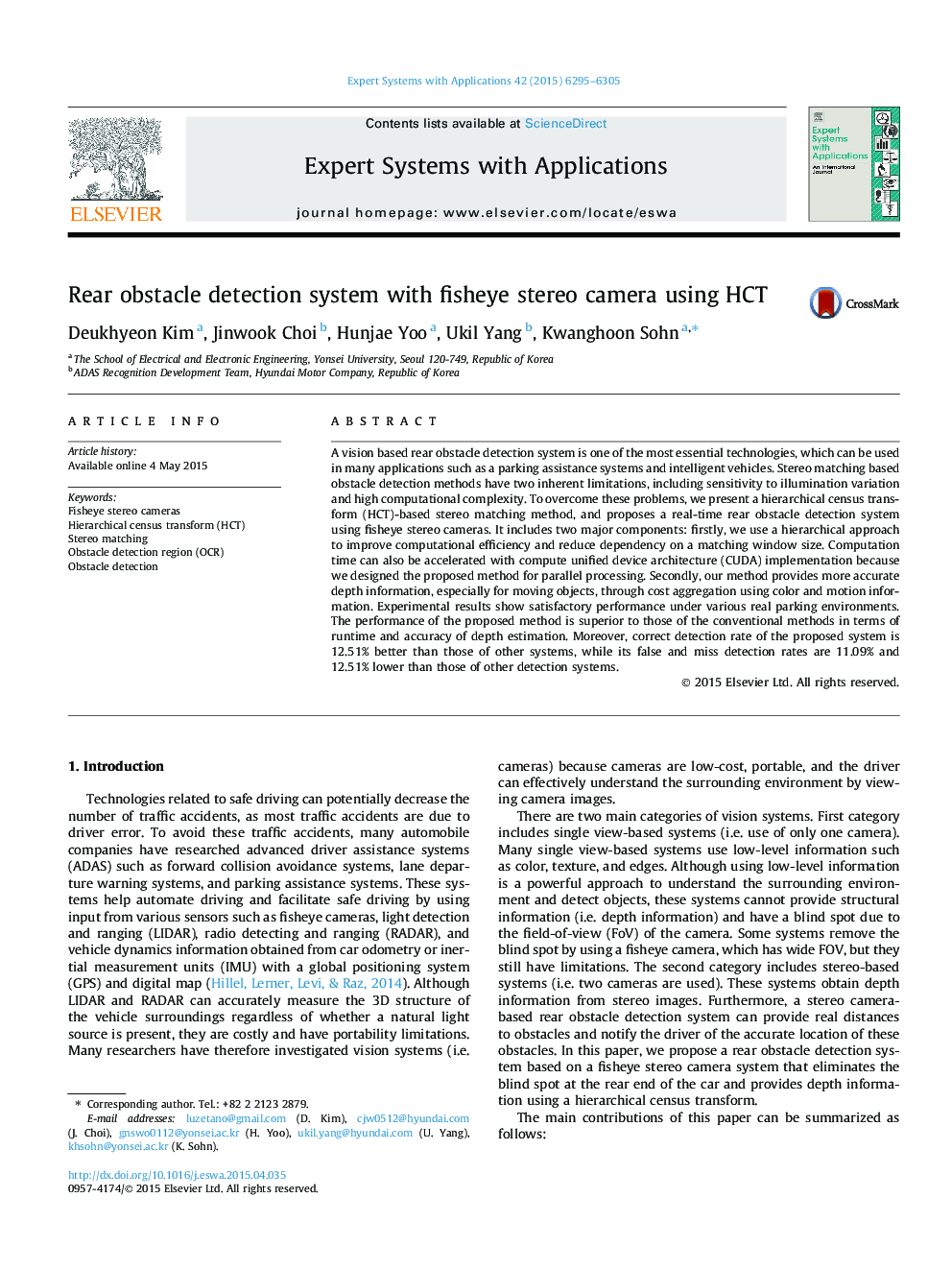| کد مقاله | کد نشریه | سال انتشار | مقاله انگلیسی | نسخه تمام متن |
|---|---|---|---|---|
| 384903 | 660856 | 2015 | 11 صفحه PDF | دانلود رایگان |

• Disparity for wide range from fish-eye stereo camera is suitable to rear applications.
• Hierarchical structure provides real-time and stable disparity regardless of window-size.
• Block independency of initial census map is appropriate to graphic processing unit.
• Extracting obstacle candidate region reduces efficiently obstacle search regions.
A vision based rear obstacle detection system is one of the most essential technologies, which can be used in many applications such as a parking assistance systems and intelligent vehicles. Stereo matching based obstacle detection methods have two inherent limitations, including sensitivity to illumination variation and high computational complexity. To overcome these problems, we present a hierarchical census transform (HCT)-based stereo matching method, and proposes a real-time rear obstacle detection system using fisheye stereo cameras. It includes two major components: firstly, we use a hierarchical approach to improve computational efficiency and reduce dependency on a matching window size. Computation time can also be accelerated with compute unified device architecture (CUDA) implementation because we designed the proposed method for parallel processing. Secondly, our method provides more accurate depth information, especially for moving objects, through cost aggregation using color and motion information. Experimental results show satisfactory performance under various real parking environments. The performance of the proposed method is superior to those of the conventional methods in terms of runtime and accuracy of depth estimation. Moreover, correct detection rate of the proposed system is 12.51% better than those of other systems, while its false and miss detection rates are 11.09% and 12.51% lower than those of other detection systems.
Journal: Expert Systems with Applications - Volume 42, Issues 17–18, October 2015, Pages 6295–6305